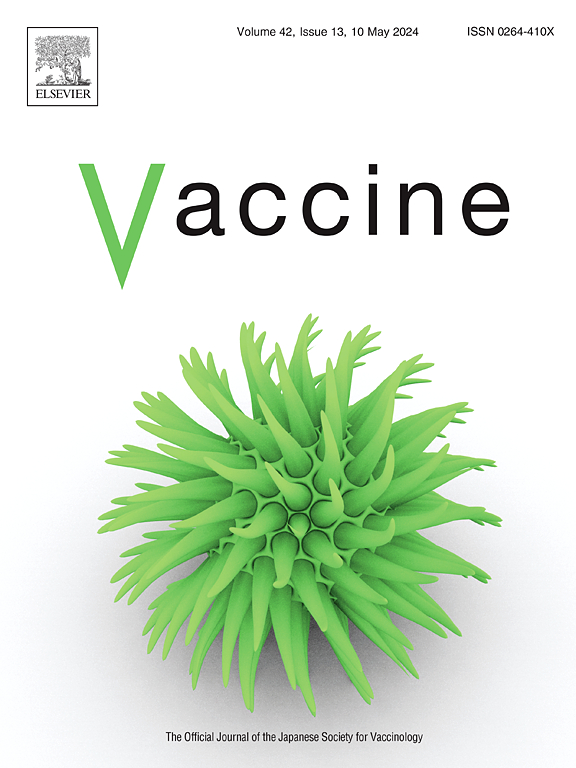Impact of the COVID-19 pandemic on influenza knowledge, attitudes, and vaccination practices in at-risk groups in the Kyrgyz Republic: A comparative study
IF 4.5
3区 医学
Q2 IMMUNOLOGY
引用次数: 0
Abstract
Instruction
Influenza remains a global health concern, causing significant annual morbidity and mortality. Vaccination is the most effective preventive measure; however, global vaccine coverage remains insufficient to establish herd immunity. In Kyrgyzstan, despite a national immunization program, influenza vaccine uptake among the risk groups has fluctuated between 11 % to 50 %. Understanding shifts in vaccination intentions before and during the COVID-19 pandemic is critical for refining public health strategies and institutional approach for improving vaccination coverage.
Methods
This cross-sectional study assessed influenza-related knowledge, attitudes, and practices (KAP) among risk groups (pregnant women, adults with chronic diseases, healthcare workers) in Kyrgyzstan before and during the pandemic (N = 7200). Data were analyzed using EPI Info, with descriptive statistics and logistic regression models to identify associations between socio-demographic/KAP factors and vaccination intentions/recommendations.
Results
Pre-pandemic, lower education (OR = 2.2; 95 %CI 1.4–3.2) and employment (OR = 1.4; 95 %CI 1.0–1.8) predicted higher vaccination intent among pregnant women; these associations waned during the pandemic, though women without comorbidities maintained stronger intent. Among adults with chronic diseases, divorced individuals (OR = 2.74; 95 %CI 1.12–6.6) in pre-pandemic and those distrusting vaccine protective effect (OR = 7.74; 95 %CI 4.2–14.1) showed heightened willingness for vaccination in the pandemic time. Healthcare workers with >5 years' experience and those treating children (OR = 2.39; 95 %CI 1.24–4.6) were more likely to recommend vaccines during the pandemic, reversing pre-pandemic trends. Prioritization of the target groups also shifted: older adults and comorbid patients gained emphasis during the pandemic, whereas children and medical staff were prioritized earlier.
Conclusion
The COVID-19 pandemic reshaped influenza vaccine uptake dynamics, altering socio-demographic predictors and KAP patterns. Addressing vaccine hesitancy, misinformation, and structural barriers through tailored education and proactive healthcare engagement is vital. These findings underscore the need for adaptable, context-sensitive vaccination strategies and robust public health interventions to sustain immunization progress in evolving epidemiological landscapes.
2019冠状病毒病大流行对吉尔吉斯共和国高危人群流感知识、态度和疫苗接种做法的影响:一项比较研究
流感仍然是一个全球性的健康问题,每年造成大量的发病率和死亡率。接种疫苗是最有效的预防措施;然而,全球疫苗覆盖率仍不足以建立群体免疫。在吉尔吉斯斯坦,尽管实施了国家免疫规划,但高危人群的流感疫苗接种率在11%至50%之间波动。了解在COVID-19大流行之前和期间疫苗接种意图的变化,对于完善公共卫生战略和提高疫苗接种覆盖率的机构方法至关重要。方法本横断面研究评估了吉尔吉斯斯坦流行前和流行期间危险人群(孕妇、成人慢性病患者、卫生保健工作者)的流感相关知识、态度和做法(KAP) (N = 7200)。使用EPI Info对数据进行分析,采用描述性统计和逻辑回归模型,以确定社会人口统计学/KAP因素与疫苗接种意图/建议之间的关联。结果大流行前,受教育程度较低(OR = 2.2;95% CI 1.4 - 3.2)和就业(OR = 1.4;95% CI 1.0-1.8)预测孕妇较高的疫苗接种意向;这些关联在大流行期间减弱,尽管没有合并症的妇女保持了更强的意愿。成人慢性病患者中,离婚个体(OR = 2.74;95% CI 1.12-6.6)和不相信疫苗保护作用的人(OR = 7.74;95% CI 4.2-14.1)表明在大流行期间接种疫苗的意愿增强。具有5年工作经验的医护人员和儿童医护人员(OR = 2.39;(95% CI 1.24-4.6)更有可能在大流行期间推荐疫苗,扭转了大流行前的趋势。目标群体的优先次序也发生了变化:在大流行期间,老年人和合并症患者得到了重视,而儿童和医务人员更早得到了重视。结论COVID-19大流行重塑了流感疫苗的摄取动态,改变了社会人口统计学预测因子和KAP模式。通过量身定制的教育和积极的卫生保健参与来解决疫苗犹豫、错误信息和结构性障碍至关重要。这些发现强调需要适应性强、对环境敏感的疫苗接种战略和强有力的公共卫生干预措施,以便在不断变化的流行病学格局中维持免疫进展。
本文章由计算机程序翻译,如有差异,请以英文原文为准。
求助全文
约1分钟内获得全文
求助全文
来源期刊

Vaccine
医学-免疫学
CiteScore
8.70
自引率
5.50%
发文量
992
审稿时长
131 days
期刊介绍:
Vaccine is unique in publishing the highest quality science across all disciplines relevant to the field of vaccinology - all original article submissions across basic and clinical research, vaccine manufacturing, history, public policy, behavioral science and ethics, social sciences, safety, and many other related areas are welcomed. The submission categories as given in the Guide for Authors indicate where we receive the most papers. Papers outside these major areas are also welcome and authors are encouraged to contact us with specific questions.
 求助内容:
求助内容: 应助结果提醒方式:
应助结果提醒方式:


